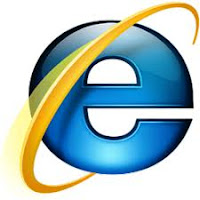Are you a new or existing Microsoft user experiencing problems with Microsoft Outlook setup? If yes, then you are in the right place. Having purchased or installed Microsoft Outlook at your computer, you are sure to get everything going related to your emails, attachments, messenger, address book import from other email accounts, and document recovery etc. You might be a common user or a big enterprise that feels stuck with the complexity of Microsoft Outlook installation and configuration.
Microsoft Outlook being one of the popularly used email applications allows users to manage virtual folders, maintain calendar and tasks, search faster, scan and download email attachments, block spam messages, and send/receive & archive mails etc. Such features enhance a user’s productivity and efficiency by saving a great deal of time and money. Loaded with so many inbuilt features, Microsoft Outlook might give you solid and recurring troubles that prompt you to look around for reliable, online Microsoft tech support.
Below are the easy steps that will help you install your Microsoft Outlook:
· Before you start setup process, close all the windows/programs active on the PC
· Click on ‘start’ button, then go to ‘control panel’
· Click on ‘add or remove programs’, a list of all the programs to be changed or removed will be populated
· Select ‘Microsoft Office’, viz. enterprise or home edition, and click on ‘change’
· After a dialog box appears, select ‘add or remove features’ and thereafter click on ‘continue’ at the bottom right hand side
· When a list of all the programs is populated, select Microsoft Outlook. Click on ‘run from my computer’ and then click on ‘continue’
· Your Microsoft Outlook will be installed on your computer automatically and will ask you to create a new email account or newsgroup as you are running it for the first time
Below are the steps that will help you configure your Microsoft Outlook:
· When a prompt comes to ‘create a new email account or newsgroup’, select ‘manually configure server settings or additional server types’
· Click ‘next’, then a new window will pop up saying ‘add new e-mail account’
· You can either follow the email setting wizard or manually create an email account by changing settings or preferences
· For manual settings, click on ‘Tools’ on the top first bar of your Microsoft Outlook window
· Select ‘Account Settings’, a window will pop up
· Click on ‘New’, then ‘Mail’, and then ‘Next’, it will direct you to ‘Add New E-mail Account’ window’
· Key-in your name, email address, and password wherever required; click on ‘remember password’ so that your password is saved and you don’t have to type it again while opening Microsoft Outlook
· Select ‘POP3’, ‘IMAP’, or ‘Microsoft Exchange’ etc. from the drop-down list in ‘Account Type’ type
· Key-in incoming and outgoing mail server addresses as ‘imap’ and ‘smtp’ respectively followed by relevant extensions, provided by your ISP (internet service provider)
· Key in the port numbers for IMAP and SMTP servers, provided by your ISP
· Click on ‘Require logon using Secure Password Authentication (SPA)’ if you desire to log on using SPA
· Click ‘Test Account Settings’ for testing that an email account has been created and the servers are logged on and active, a test message will be sent to check the settings
· To make more changes to your email account, click on ‘More Settings’ and key in the desired information
· Click on ‘Next’ and then ‘Finish’



